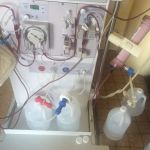This page is not available
Go back to the homepage »Page Not Found Error Resolution
Trending Blog Articles
The Importance of Self-Care for Family Caregivers: How to Stay Healthy While Caring for Loved OnesThe Benefits of Journaling and Creative Writing for Older AdultsHow to Transition from Hospital to Home Care: A Complete GuideUnderstanding the Risks of Polypharmacy in Older AdultsTips for Encouraging Hydration Throughout the Day in Aging Loved OnesHow to Support Seniors in Enjoying Meaningful Social Interactions Every DayTips for Supporting Seniors With Emotional Health ChallengesStrategies for Incorporating Mindfulness and Relaxation Into Daily RoutinesHow to Create Comfortable Spaces That Encourage Reading and LearningThe Importance of Cybersecurity in Home Health Care - HomeCare HubEffective Communication Strategies for Dementia Care – Improve Care and SupportThe Role of Music Therapy in Dementia Care: Enhancing Well-being and Quality of LifeStrategies for Promoting a Sense of Autonomy and Choice for Older AdultsHow to Encourage Mindful Eating and Healthy Nutrition HabitsHow to Manage Caregiver Stress and Anxiety: Practical Strategies for CaregiversHow Home Care Services Supported a Family During a Crisis | HomeCare HubTips for Making Home Bathrooms Safer and More Comfortable for SeniorsTips for Helping Seniors Stay Motivated and Active Every DayTips for Creating a Safe and Inviting Outdoor Space for SeniorsLegal Rights and Protections for Family Caregivers in the U.S.
Categories
Top Visited Sites
 Home Hemo Professional, LLC4.0 (2 reviews)
Home Hemo Professional, LLC4.0 (2 reviews) WelbeHealth4.0 (21 reviews)
WelbeHealth4.0 (21 reviews) Rainbow Home Care Services, Inc.4.0 (16 reviews)
Rainbow Home Care Services, Inc.4.0 (16 reviews) Visiting Angels3.0 (2 reviews)
Visiting Angels3.0 (2 reviews) The Wright Home care4.0 (4 reviews)
The Wright Home care4.0 (4 reviews) Home Instead4.0 (12 reviews)
Home Instead4.0 (12 reviews)Trending HomeCare Tips Posts
 Understanding the Stages of Alzheimer’s Disease: Early, Middle, and Late
Understanding the Stages of Alzheimer’s Disease: Early, Middle, and Late How to Make Home Bathrooms Safer and More Comfortable for Seniors
How to Make Home Bathrooms Safer and More Comfortable for Seniors Legal Rights and Protections for Family Caregivers in the U.S.
Legal Rights and Protections for Family Caregivers in the U.S. Financial Planning for Aging: Preparing for Future Care Needs
Financial Planning for Aging: Preparing for Future Care Needs Strategies for Promoting a Sense of Autonomy and Choice for Older Adults
Strategies for Promoting a Sense of Autonomy and Choice for Older Adults How to Handle Wandering in Dementia Patients
How to Handle Wandering in Dementia Patients